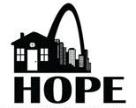What Is a Reverse Mortgage?
A reverse mortgage is a loan against your home that you do not have to pay back for as long as you live there. You (or your heirs) pay the money back plus interest when you die, permanently move out of your home, or sell your home.
What is a Reverse Mortgage Good For?
Reverse mortgages can be used for many different purposes, such as:
- Paying off an existing mortgage so that you can use your income for other purposes
- Borrowing against the home to help pay for living expenses, home repairs, in-home care, or other needs or desires
- Planning ahead for retirement by setting up a line of credit that will be there when you need it in the future.
- Buying a new home
Who’s Eligible?
All borrowers must be at least 62 years of age for the HECM loan.
Owners must occupy the home as their primary residence (that means where you live more than half the year). You can’t do a HECM on a vacation home.
Borrowers must be able to pay their own property taxes, homeowners insurance, and upkeep on the home.
The home does not have to be owned free and clear, but any existing mortgage has to be small enough that it can be paid off using the reverse mortgage.
The house must be in generally good condition, though some repairs may be completed using the money from the loan.
How They Work
Because you make no monthly payments, interest is added to the loan every month, which causes the amount you owe to grow larger and larger over time.
As your debt grows larger, the amount of cash you would have left after selling the house and paying off the loan (your “equity”) generally grows smaller.
Reverse mortgage borrowers continue to own their homes and can choose to sell at any time.
The borrower is still responsible for property taxes, insurance, and repairs. If you fail to carry out these responsibilities, your loan could become due and payable in full.
What You Get
The amount of money you can get from a reverse mortgage depends on your age, your home’s value, and the cost of the loan. Loan amounts are about 40-70% of the value of the house. The older you are, the more you can borrow.
After any existing mortgage, or other loan or lien against the house, is paid off, the remaining money from the reverse mortgage can be borrowed in several ways.
You could get a “lump sum” of money after closing, a line of credit that you can draw from as needed in the future, or a stream of monthly loan advances that you can use to supplement your income. You can also combine these options.
Loan Costs
Reverse mortgages are not cheap. Upfront costs are based on the value of the house and how much money is being borrowed at the beginning of the loan. Total upfront costs can range from a few thousand to over $20,000. Lenders may vary in what they charge, but most fees have limits.
In addition to the startup costs, interest and mortgage insurance are added to the loan balance each month. These costs compound, with interest charged on interest. That means that the costs can really mount up over time, using up much of the value of the home in some cases.
More Consumer Information
Consumer Financial Protection Bureau Guide to Reverse Mortgages: CFPB guide
